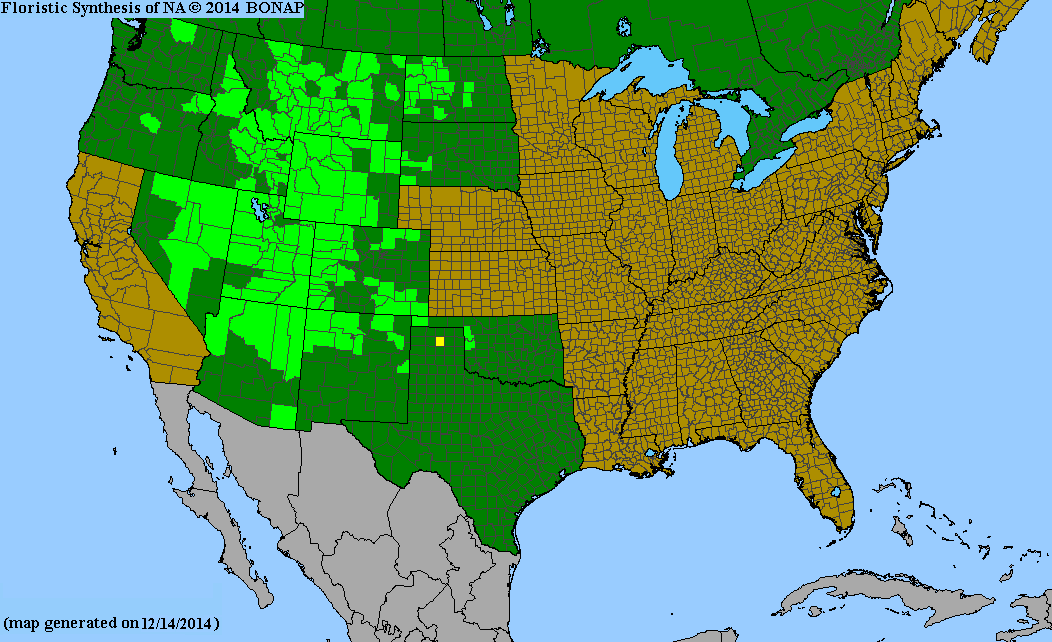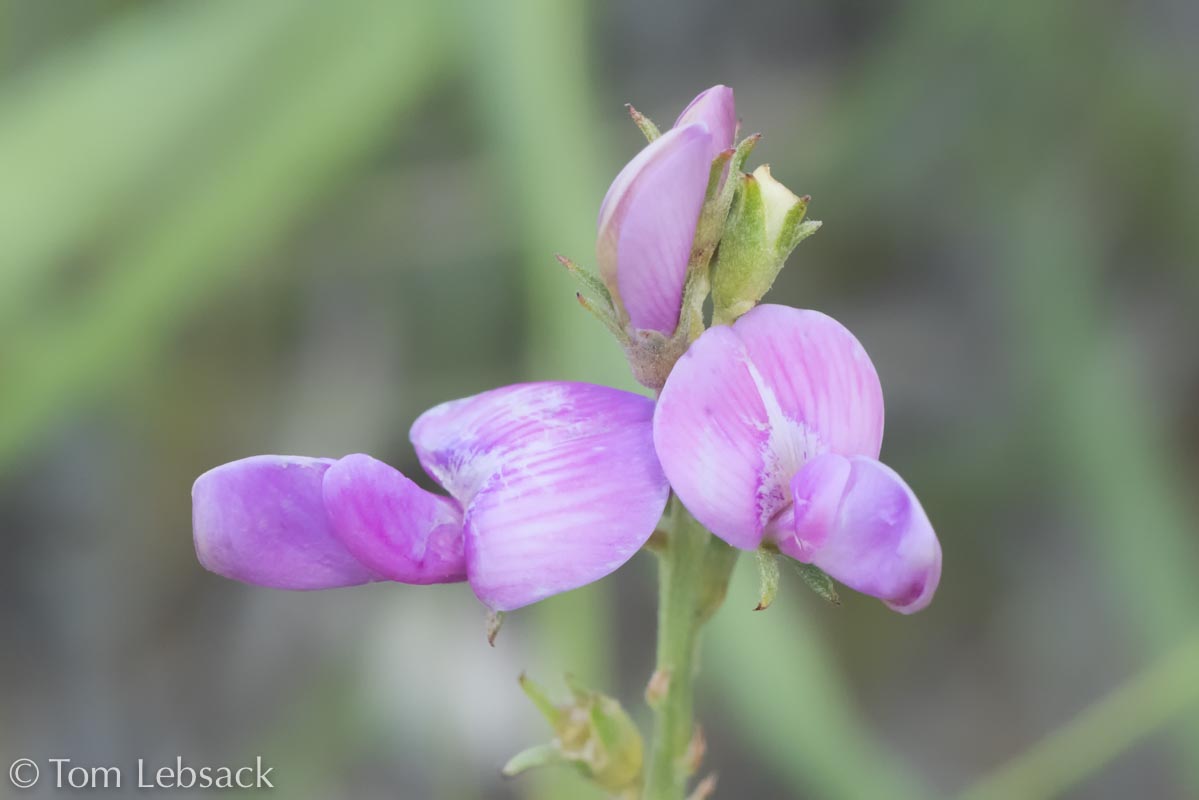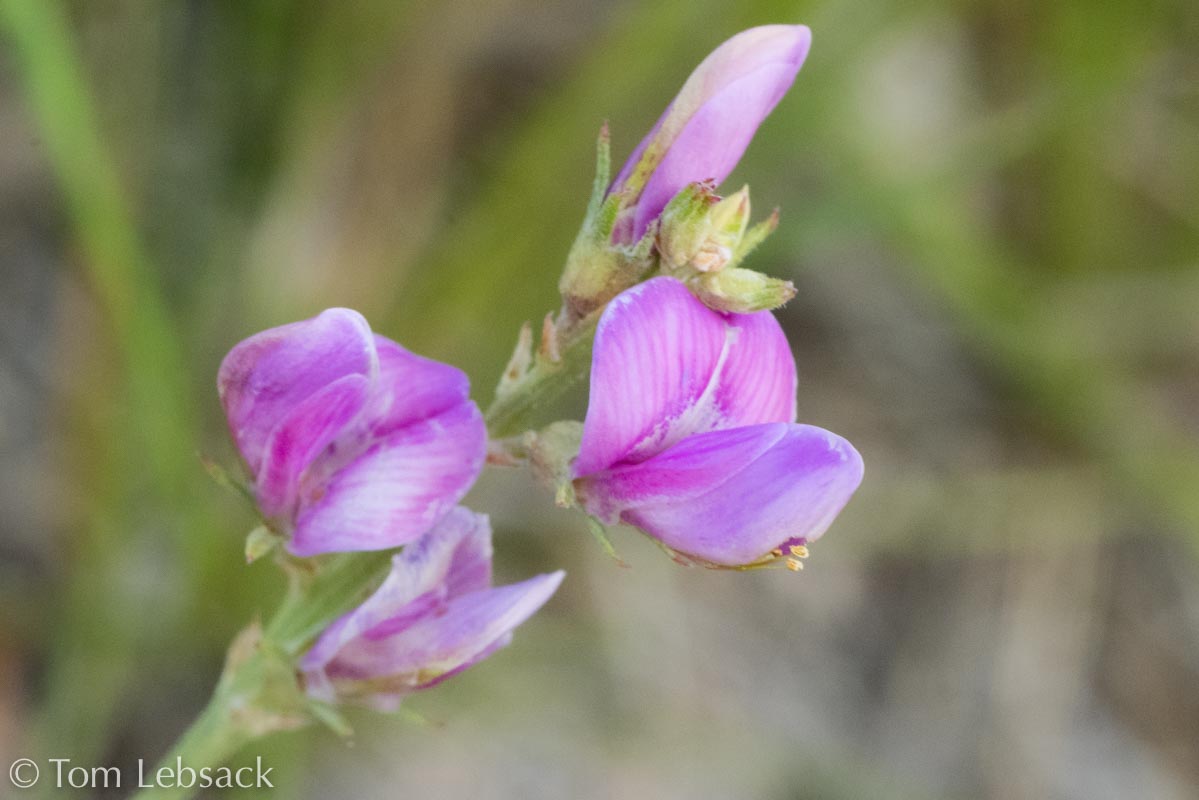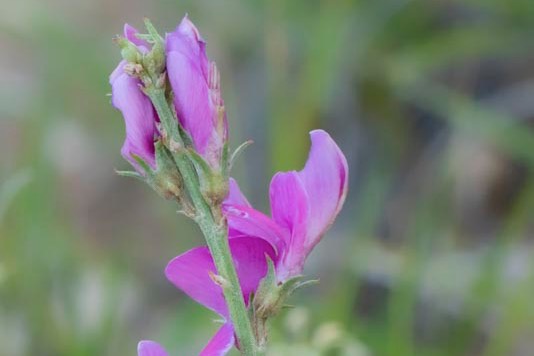Hedysarum boreale
(Boreal Sweetvetch)
| Scientific Name | Hedysarum boreale | USDA PLANTS Symbol | HEBO |
| Common Name | Boreal Sweetvetch, Utah Sweetvetch, Northern Sweetvetch | ITIS Taxonomic Serial No. | 26724 |
| Family | Fabaceae (Pea) | SEINet Reference |
Click Here |
| Description |
Life zones and habitat: Plains to montane (4000 to 9000 ft.); dry, rocky, sandy soils in open locations. Plant: Erect or spreading perennial 12 to 30 inches tall, stems are simple or with a few branches. Leaves: Alternate, odd-pinnate compound leaves, 2 to 4.3 inches long; 7-15 leaflets, linear-elliptic, oblong, or obovate, 0.4 to 0.8 inches long with rounded tips; surfaces are nearly smooth to sparsely hairy above and hairy (strigose) beneath. Inflorescence: Racemes arising from leaf axils with a few to several blossoms; the corolla is purple-red to pink, sometimes white, the keel is much longer than the wings and the banner is about 1/2 inch long; the calyx has glandular hairs and is 1 to 1-3/8 inches long with teeth longer than the tube; bracts are lanceolate, 1/8 to 1/3-inch long. Bloom Period: May to July. References: "Flora of Colorado" by Jennifer Ackerfield, American Southwest and Montana Field Guide. |
BONAP Distribution Map Map Color Key |
Colorado Status: Native |
© Tom Lebsack 2025
Banner photo: Castilleja rhexifolia and a brewing storm over the San Juan Mountains
I try to provide accurate, up-to-date, and relevant information, but cannot guarantee the completeness or accuracy of any information presented on this website. I use authoritative references to insure high standards of accuracy and review and update the information frequently.



